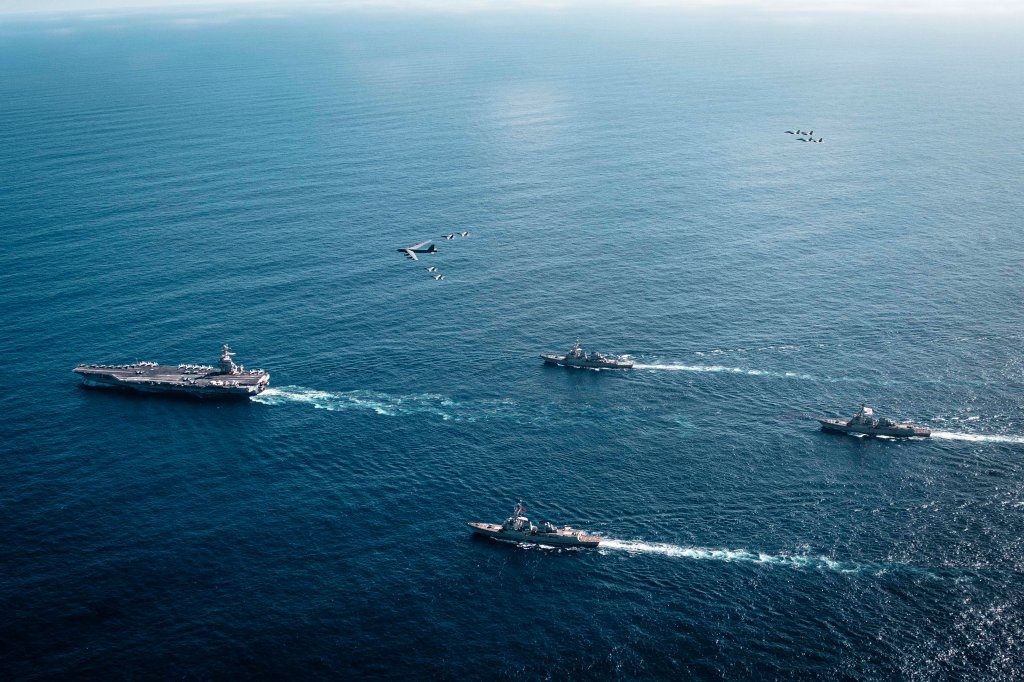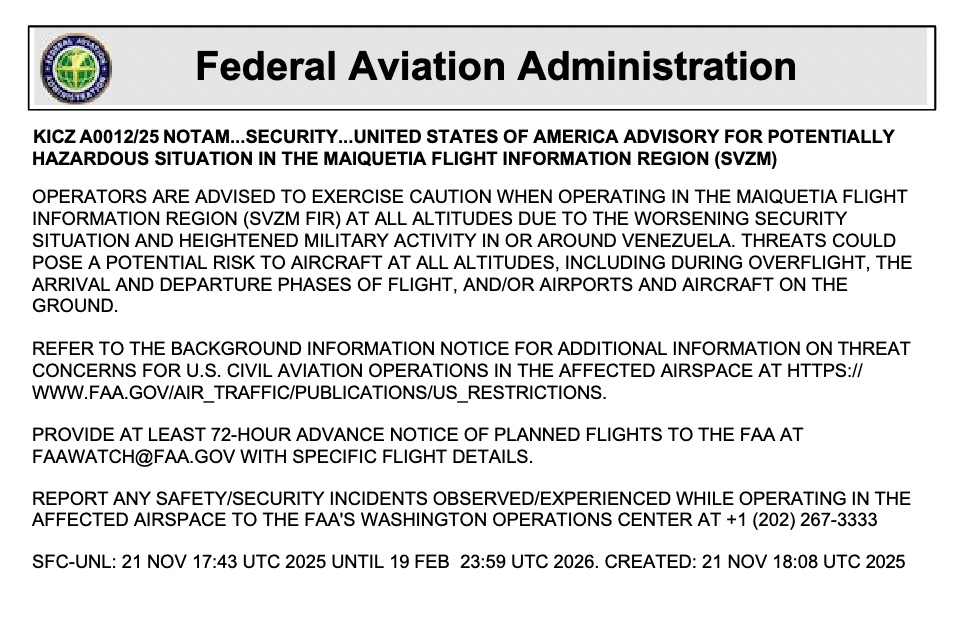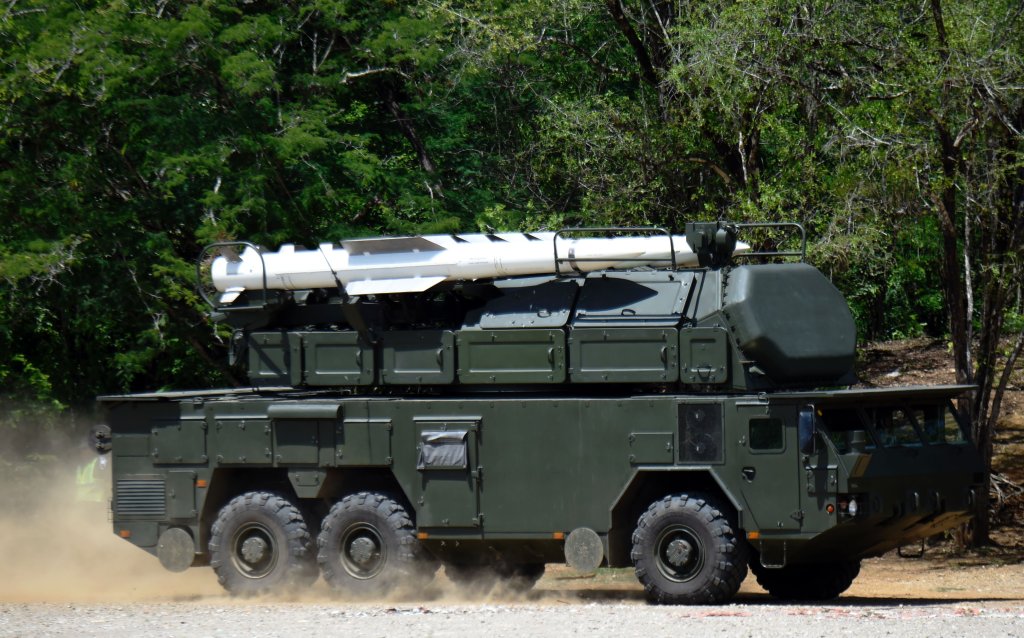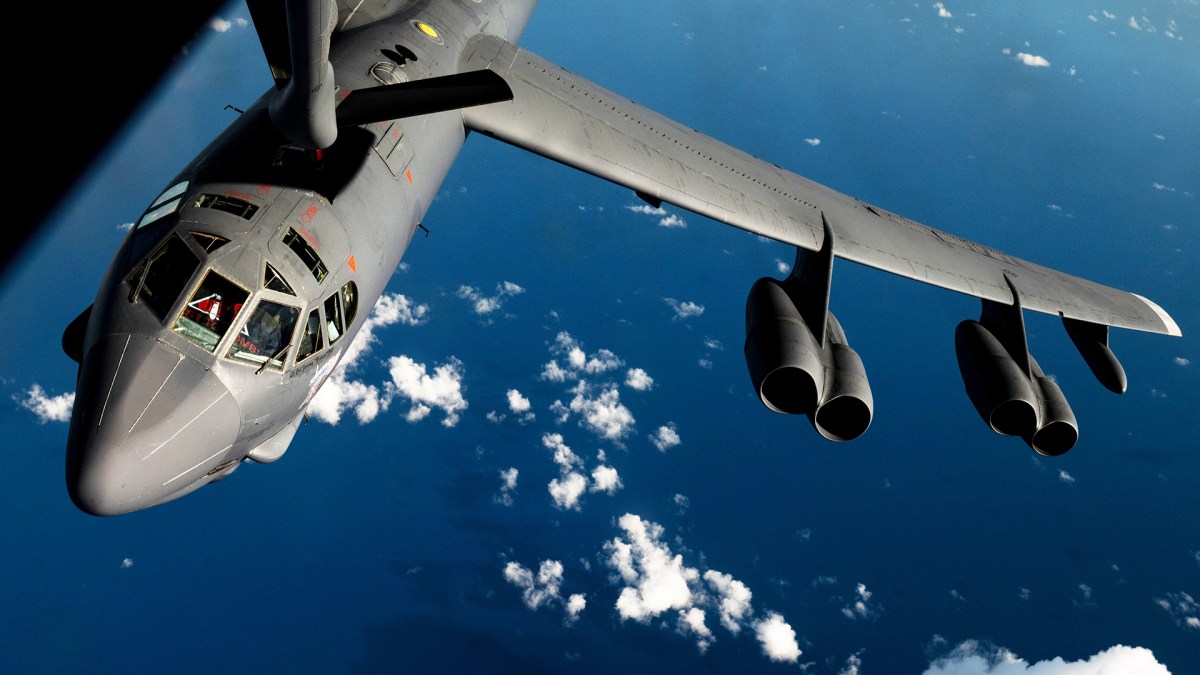The TWZ Newsletter
Weekly insights and analysis on the latest developments in military technology, strategy, and foreign policy.
The pressure on Venezuelan dictator Nicolas Maduro continues to ratchet up. The cartel he allegedly leads was officially designated as a foreign terrorist organization (FTO) on Monday, a move Defense Secretary Pete Hegseth said last week increases U.S. military options in the region. In addition, Air Force Gen. Dan Caine, Chairman of the Joint Chiefs of Staff, is now in Puerto Rico amid the largest U.S. military buildup in the Caribbean since the 1962 Cuban missile crisis.
Venezuela on Monday denounced the FTO designation against Cartel de los Soles, also known as Cartel of the Suns. The move was first proposed by U.S. Secretary of State Marco Rubio on Nov. 17.
Venezuela “categorically, firmly, and absolutely rejects the new and ridiculous fabrication by the United States Secretary of State, Marco Rubio, who designates the nonexistent Cartel of the Suns as a terrorist organization,” Venezuelan Foreign Minister Yvan Gil said Monday on Telegram. The move rehashes “an infamous and vile lie to justify an illegitimate and illegal intervention against Venezuela, under the classic U.S. regime change format. This new maneuver will meet the same fate as previous and recurrent aggressions against our country: failure.”
🚨📛 Régimen de Maduro cuestiona la designación del Cartel de los Soles
🇻🇪 El canciller del régimen, Yván Gil, publicó un comunicado donde desestimó con ataques y descalificaciones la reciente clasificación del Cartel de los Soles como Organización Terrorista Extranjera por… pic.twitter.com/zIoETJ4eam
— EVTV (@EVTVMiami) November 24, 2025
You can catch up with our most recent coverage about what has been dubbed Operation Southern Spear in our story here.
In an interview last week, Hegseth was pointedly vague about what the designation of Cartel De Los Soles means to potential U.S. military operations against Maduro. No decisions related to countering Maduro’s cartel are “off the table,” Hegseth explained, but “nothing is automatically on the table,” either.
On Sunday, however, Reuters reported that the United States “is poised to launch a new phase of Venezuela-related operations in the coming days.”
It remains unknown what actions U.S. President Donald Trump will authorize; however, “covert operations would likely be the first part of the new action against Maduro,” according to Reuters. “Two U.S. officials told Reuters the options under consideration included attempting to overthrow Maduro.”
We’ve reached out to the White House and Pentagon for more details. The Pentagon referred us to the White House.
As we noted before: “If expanded strikes on land targets occur after the November 24th horizon, they could be limited to strictly cartel and drug production target sets that do not include state facilities. These could include labs, logistical nodes, such as port facilities, and cartel personnel. Striking military installations and other state infrastructure that the U.S. believes actively facilitate the drug trade would be a further escalation. Going directly after the Maduro regime and its military capabilities as a whole would be the farthest rung up the escalation ladder.”
There was also reporting that Trump administration officials discussed the possibility of dropping leaflets on Venezuela’s capital city of Caracas as a kind of psychological warfare to pressure Maduro. However, it was suggested that the operation could take place on Maduro’s 63rd birthday, which was Sunday. That did not happen.
Caine and his senior enlisted advisor, David L. Isom, are visiting Puerto Rico “to engage with service members and thank them for their outstanding support to regional missions,” the Joint Chiefs of Staff said in a statement. “They will also visit and thank Sailors operating at sea for their dedicated, unwavering service in the SOUTHCOM area of responsibility.”
His visit comes as the U.S. has assembled a considerable military presence.
There are currently 11 U.S. Navy surface combatants and four support vessels in the region, a U.S. Navy official told The War Zone on Monday. The official added that there are about 100 total U.S. Navy vessels deployed around the globe. That means about 15% of the Navy’s deployed surface fleet is now in the Caribbean.
 The U.S. Navy’s Gerald R. Ford Carrier Strike Group, including the flagship USS Gerald R. Ford (CVN 78), left, USS Winston S. Churchill (DDG 81), front, USS Mahan (DDG 72), back, USS Bainbridge (DDG 96), and embarked Carrier Air Wing Eight F/A-18E/F Super Hornets assigned to Strike Fighter Squadrons 31, 37, 87, and 213, operates as a joint, multi-domain force with a U.S. Air Force B-52 Stratofortress. (U.S. Southern Command) Petty Officer 3rd Class Tajh Payne
The U.S. Navy’s Gerald R. Ford Carrier Strike Group, including the flagship USS Gerald R. Ford (CVN 78), left, USS Winston S. Churchill (DDG 81), front, USS Mahan (DDG 72), back, USS Bainbridge (DDG 96), and embarked Carrier Air Wing Eight F/A-18E/F Super Hornets assigned to Strike Fighter Squadrons 31, 37, 87, and 213, operates as a joint, multi-domain force with a U.S. Air Force B-52 Stratofortress. (U.S. Southern Command) Petty Officer 3rd Class Tajh Payne
The collection of military might also includes a special operations mothership and an array of aerial assets like F-35B stealth fighters, MQ-9 Reaper drones, P-8 maritime patrol aircraft, and AC-130 Ghostrider gunships. There are also about 15,000 U.S. personnel deployed to the region. The massing of U.S. forces is a major presence for the region, but nothing like what we have seen for actual invasion or full-spectrum war operations.
While the timing of any potential military operation against Maduro remains publicly unknown, the increasingly tense situation is having a visible effect on civilian aviation. Several airlines have cancelled flights to and from Venezuela and as of Monday morning, the airspace around the South American nation was largely free of commercial aviation, according to the latest tracking by FlightRadar24. U.S. air carriers have been prohibited from traveling to or from Venezuela since 2019.
The cleared airspace follows the FAA issuing a Notice to Airmen (NOTAM) on Friday, warning pilots about flying over or near Venezuela.
“Operators are advised to exercise caution when operating in the Maiquetia Flight Information Region (SVZM FIR) at all altitudes due to the worsening security situation and heightened military activity in or around Venezuela,” the NOTAM read. In effect until Feb 19, it also requires that U.S. civil aviation operators file at least a 72-hour notice before flying in the area.
 FAA
FAA
The NOTAM was issued due to “an increase in Global Navigation Satellite System (GNSS) interference” near Venezuela since September, the FAA stated on Friday.
Another factor was “increasing Venezuelan military readiness,” the FAA added.
“Some civil aircraft recently reported GNSS interference while transiting the SVZM FIR, which, in some cases, caused lingering effects throughout the flight,” according to the FAA notice. “GNSS jammers and spoofers can affect aircraft out to 250 nautical miles and can impact a wide variety of critical communication, navigation, surveillance, and safety equipment on aircraft.”
Moreover, since early September, Venezuela “has conducted multiple military exercises and directed the mass mobilization of thousands of military and reserve forces,” the FAA explained. “While Venezuela has at no point expressed an intent to target civil aviation, the Venezuelan military possesses advanced fighter aircraft and multiple weapons systems capable of reaching or exceeding civil aircraft operating altitudes, as well as potential low-altitude risk from man-portable air defense systems (MANPADS) and anti-aircraft artillery.” You can read more about Venezuela’s air defenses in our deep dive here.
 One of Venezuela’s Russian-made BUK-M2E air defense systems. (Photo credit should read JUAN BARRETO/AFP via Getty Images) JUAN BARRETO
One of Venezuela’s Russian-made BUK-M2E air defense systems. (Photo credit should read JUAN BARRETO/AFP via Getty Images) JUAN BARRETO
The FAA added that it will “continue to monitor the risk environment for U.S. civil aviation operating in the region and make adjustments, as appropriate, to safeguard U.S. civil aviation.”
In addition to the NOTAM near Venezuela, the FAA on Friday also posted one extending from Curacao deep out into the Caribbean. It runs through Dec. 31. This where the U.S. has bene operating at sea and in the air heavily, as well as where interactions with Venezuelan fighter aircraft and U.S. ships have occurred.
“Aircraft operators are advised to exercise extreme caution when operating” in the Curacao area,” according to that NOTAM. “Frequent pilot reports and primary radar within [the area] indicates the presence of non-identified aircraft operations…Pilots are requested to report any unusual airborne activity immediately” to air traffic control.
U.S. military aircraft are also frequently conducting training and probing exercises near Venezuela. A glaring example took place Nov. 20 during what U.S. Southern Command (SOUTHCOM) calls a “bomber attack demo.” It included B-52H Stratofortress crews from Minot Air Force Base, KC-135 aerial refueling tankers from MacDill Air Force Base in Tampa, Florida, and fighter aircraft already deployed to the region.
“Operation Southern Spear support showcases our vow to deter illicit drug networks & defend the homeland,” SOUTHCOM said on X.
As we explained in an earlier story, the B-52s “are capable of unleashing waves of standoff cruise missiles and can carry a host of other conventional munitions that can be employed against targets on land and at sea. Though the Venezuelan armed forces have limited air defense capabilities, they could still pose a threat. Standoff strikes from aircraft like the B-52 and other assets would be a likely component of any future U.S. direct action against targets inside the country to help reduce risks to friendly forces. They could even target air defense systems to help clear the way for follow-on operations.”
SOUTHCOM’s statement followed our reporting that U.S. aviation assets, including a U.S. Air Force RC-135V Rivet Joint electronic surveillance plane, were “testing Venezuelan sensors and responses,” a U.S. official told us last week. It was part of the pressure campaign to show U.S. capabilities in the Caribbean.”
SOUTHCOM on Monday pushed back against a claim that it was restricting Thanksgiving and Christmas leave “in preparation for possible land strikes in the next 10 days to two weeks.
“Our service members and civilian employees are always afforded the opportunity to take leave throughout the year, and that includes holiday periods,” a SOUTHCOM spokesperson told us Monday. “The American people can be assured that SOUTHCOM remains steadfast in its mission year-round to protect the security of the Western Hemisphere and the safety of the American Homeland.”
🚨 SOUTHCOM is restricting / limiting leave over the Thanksgiving and Christmas holidays, in preparation for possible land strikes in the next 10 days to two weeks, I am told by a source.
— Kellie Meyer (@KellieMeyerNews) November 24, 2025
As the world waits and wonders about Trump’s next move, another aerial mission toward Venezuela could soon be in the offing. Flight trackers noticed a gathering of KC-46 Pegasus aerial refuelers at MacDill, which has become a domestic support hub for Southern Spear. Refuelers from MacDill, which normally only beds the KC-135s, have frequently provided gas to strategic bombers flying over the Caribbean.
RCH 020/027/024 (KC-46) repositioning to MacDill AFB this morning. Looks like these will be for refueling bombers on another Caribbean mission. pic.twitter.com/dFGnYCCh2N
— Thenewarea51 (@thenewarea51) November 23, 2025
The destination of these bombers is unknown at the moment. We will continue to monitor this increasingly tense situation in the Caribbean and provide updates when warranted.
Contact the author: howard@thewarzone.com
Howard is a Senior Staff Writer for The War Zone, and a former Senior Managing Editor for Military Times. Prior to this, he covered military affairs for the Tampa Bay Times as a Senior Writer. Howard’s work has appeared in various publications including Yahoo News, RealClearDefense, and Air Force Times.

